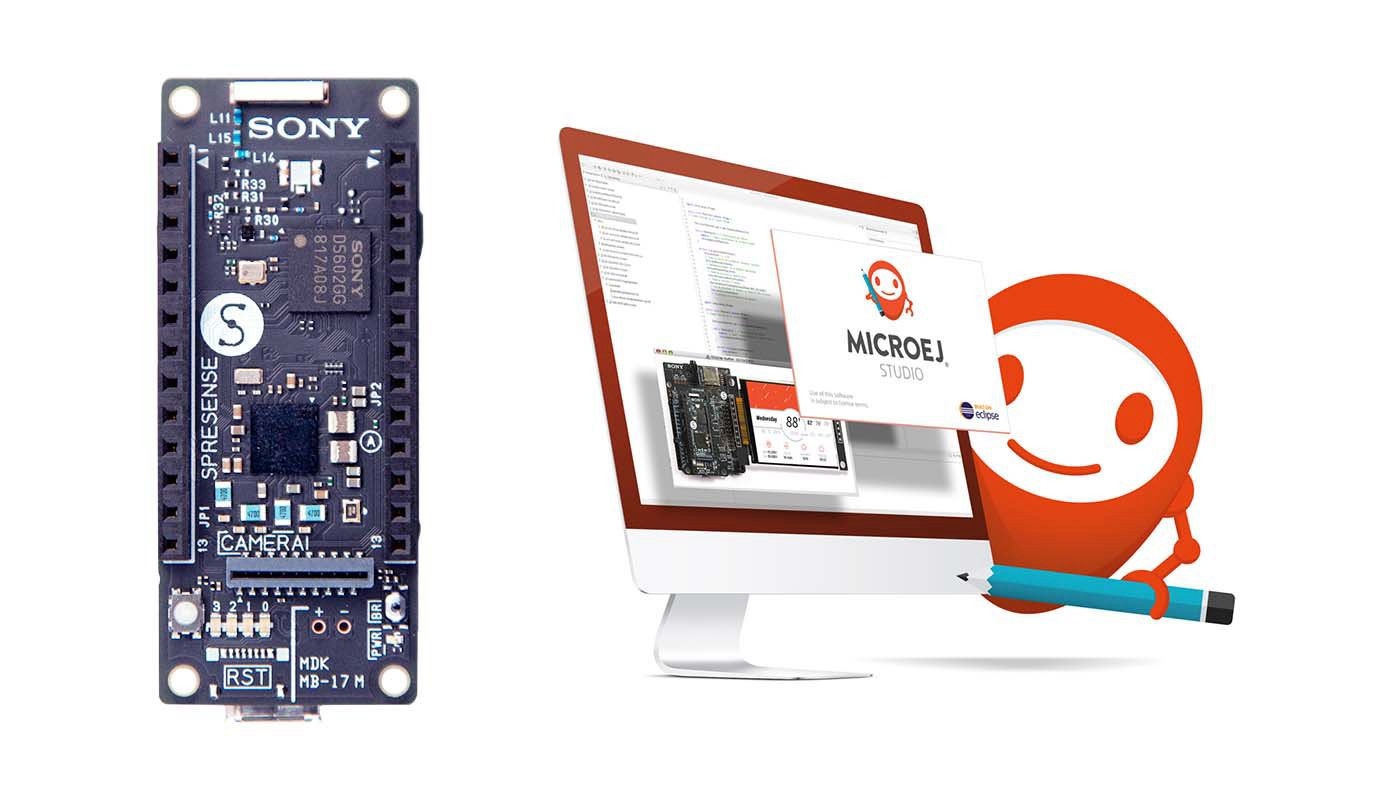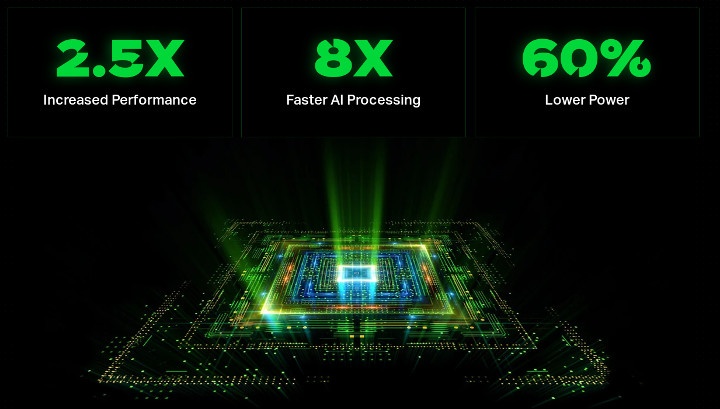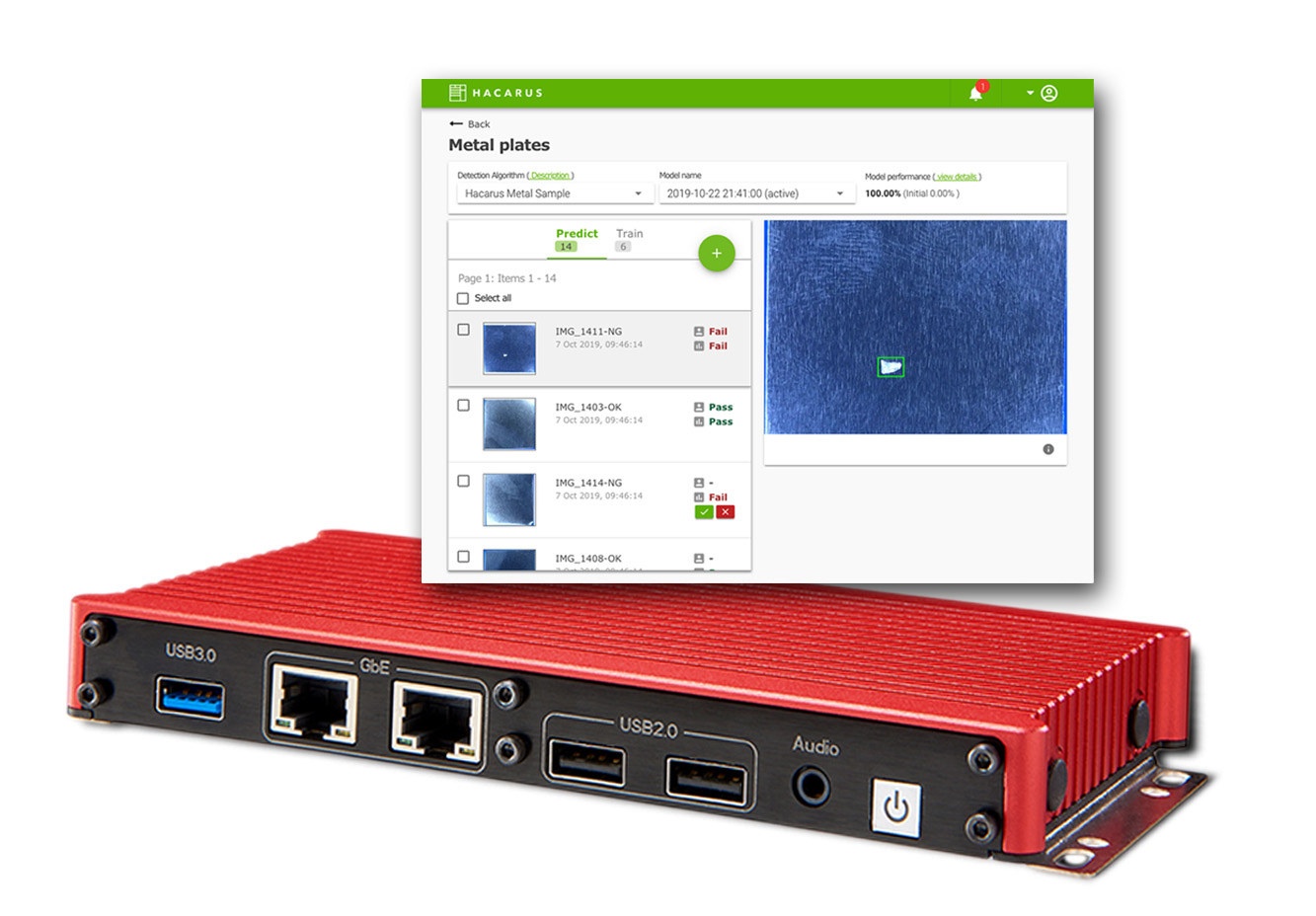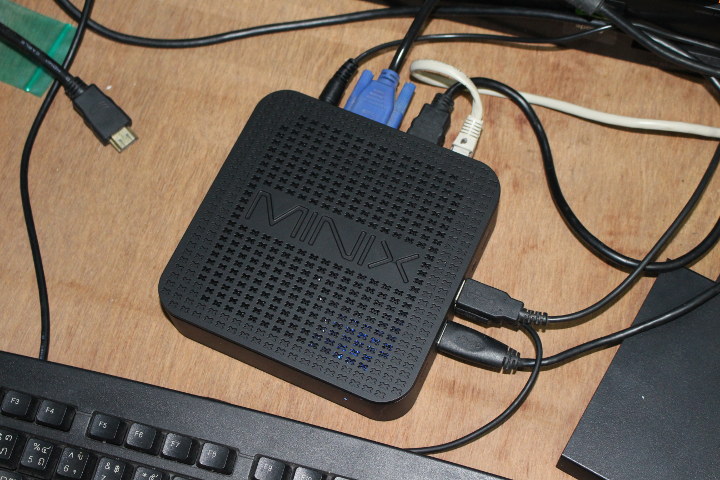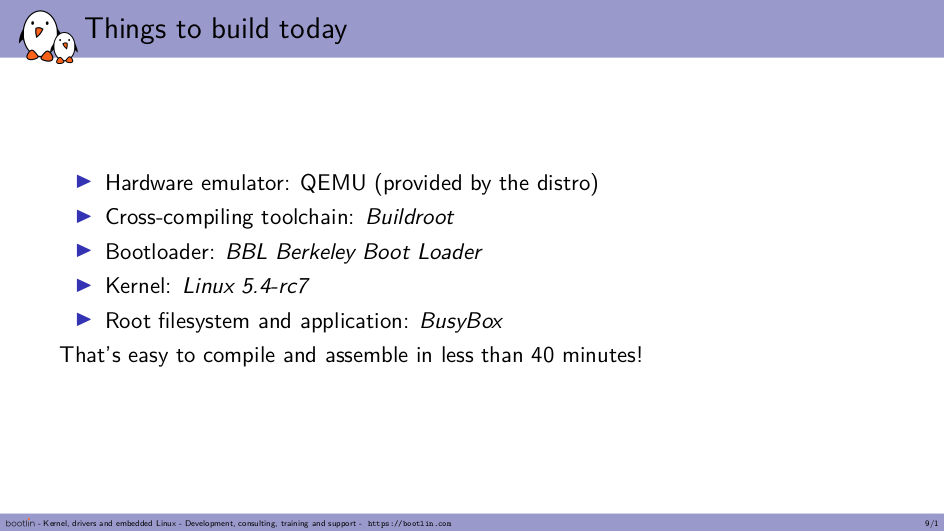We’ve already seen a fair amount of portable displays launched in recent years which are often supposed to be brought along with your laptop or smartphone, including DUO add-on display, TAIHE Gemini 15.6″ FullHD/4K display, and the low-cost BlitzWolf BW-PCM1 11.6″ display among many others. Another option is Desklab 15.6″ portable display available either in Full HD or 4K resolution and which comes with stereo speakers in a similar fashion to the TAIHE model but with different ports, and no battery. Desklab key features and specifications: Display 15.6″ IPS touchscreen display with FullHD (1920×1080) or 4K (3840×2160) resolution 10ms response time 400 cd/m2 luminance 183° viewing angles Ports mini HDMI input 2x USB typ-C ports 3.5mm audio jack Micro USB port Audio – Stereo speakers Misc – Power button, volume rocker Battery – None, used the host battery Thickness – ~0.6 cm Weight – 595 grams Since the display comes […]
Sony Spresense 6-core MCU Development Board Now Supports Java
Sony Spresense board was introduced in spring 2018 with a 6-core Cortex-M4 microcontroller from the company, GPS & GLONASS, as well as audio support. The breadboard-compatible board could also be inserted into an Arduino UNO R3 compatible base board, and Sony offered support for both the Arduino IDE and a C-based NuttX-based SDK. You’ll find some more details and photos in our “review”. Sony has now partnered with MicroEJ to provide developers with Java support on Spresense board through MicroEJ Virtual Execution Environment (VEE). A Java simulator (VEE Virtual Device) allows you to develop software for Spresense independently of the hardware. Beside plenty of libraries, MicroEJ VEE features MEJ32 32-bit virtual core is compatible with various architectures including ARM Cortex-M, ARM Cortex-Ax, RX, V85, MIPS32, TriCore, and Tensilica. Java enables application portability which means that any GUI/IoT/Security or application code can run on various embedded systems supported by MicroEJ VEE. […]
Imagination Unveils IMG A-Series GPU Designed For Everything from IoT to Mobile and Server
Imagination Technologies has just launched IMG A-Series GPU which they claim is “The GPU of Everything” and “The fastest GPU IP ever”. IMG A-Series can be customized and scaled for various applications & markets from automotive, AIoT, set-top box, mobile, and server. Compared to the company’s earlier PowerVR 9Series GPU, IMG A-Series GPU delivers 2.5 times more performance, eight times faster AI processor, and 60% less power while running complex content with the same process node, area, and under similar conditions. IMG A-Series GPU supports the latest API standards including OpenGL ES, Vulkan, OpenCL, and Imagination provides a Unified AI API for use in combination with PowerVR neural network accelerators. It also offers 5x performance density compared to the best current shipping PowerVR devices and supports PVRIC4 lossless or virtually-lossless compression guaranteeing a 50% bandwidth and footprint reduction. The new GPU also leverages HyperLane Technology with up to eight individual, […]
Hacarus Embedded AI Computing Kit Leverages Sparse Modeling Technology
AI training often requires thousands of samples to become accurate, and it can be costly and time-consuming, for example, if you want to train a model to detect manufacturing defects you’d need to provide images with both defective samples and good samples. Japanese AI experts at Hacarus have been working on a solution called Sparse Modeling which requires about 50 samples or even less for training, and worked with Congatec to provides an embedded AI computing kit leveraging the technology. Sparse Modeling Technology Hacarus does not go into great detail but explains Sparse Modeling technology is using a data modeling approach that focuses on identifying unique characteristics, in a way that humans recognize friends and family without having to look at everything from feet to head. That means algorithms based on Sparse Modeling do not need as much data as traditional AI solutions, leading to much smaller AI footprint suitable […]
The Case for Running Chromium OS on IoT Devices
The concept of Chromium OS for IoT was presented by Linaro Veteran Khasim Syed Mohammed at Linaro Connect 2019, In his presentation, he talked about the possibilities and advantages of using Chromium OS for IoT devices. This approach looks promising since it’s running on a Linux Kernel base, and Chromium OS uses a lightweight graphics stack that relies on Linux DRM APIs. This may help to create an IoT device with a graphics interface, without consuming too many hardware resources. Why Chromium OS From the architecture front, chromium OS has impressive advantages compared to other lightweight Linux operating systems, such as Direct Rendering Manager, support for web-based applications, etc… Graphics Stack In Linux-based operating systems, most of the time the graphics/display stack is handled by the X-Window system (Xserver and clients). This increases the complexity of development, consumes a large number of hardware resources and increases the product development life […]
Galerdo AI Swimming Tracker Gives Audio Feedback, Plays Music – No Ear Buds Needed (Crowdfunding)
Galerdo Beker Pro Galerdo is a simple to use, swimmers attendant, that holds tight to the head and collects data. It offers interactive audio, AI advice underwater and even plays music through bone-conduction. We previously reported on fitness and swimming tracker Makibes F69 IP68 Smartwatch but it lacked audio support. Feature Awards for Galerdo Galerdo won the CES 2020 Innovation Award for Swim Tracker, AI Voice Assistant and Handset Free features. Previous and Present Devices Galerdo Inc has a previous bone-conduction audio device that offered music underwater to swimmers, without the need for a headband or earbuds. The latest device simply called Galerdo adds AI data collection and spoken advice as the user is swimming, in real-time. Quick Run Down on Bone-Conduction The AI technology that is used in the Galerdo is further enhanced by the bone-conduction transfer of sound and is a technology industry that is growing rapidly. It […]
MINIX NEO G41V-4 Mini PC Review – Part 2: Windows 10 Pro
MINIX NEO G41V-4 is the latest mini PC from the Hong Kong-based company, and this time they’ve gone fanless with a new design that should allow proper cooling with a large heatsink, plenty of ventilation holes on the top, as well as a dust-resistant meshing to present dust from entering inside the enclosure. I’ve now had time to review the fanless mini PC, and I’ll report my experience with Windows 10 Pro, while Ian did his part with Ubuntu 18.04. Switching to Windows 10 Boot from SSD I had installed the optional 240GB SSD in the first part of the review. It offers an easy way to get more storage and performance, and you don’t need to reinstall Windows 10 Pro since it’s already installed in the SSD. You just need to change some settings in the BIOS as explained in the user manual. To be on the safe side, […]
Getting Started with Embedded Linux on RISC-V in QEMU
RISC-V is getting more and more popular, but if you want to run Linux on actual hardware it’s currently fairly expensive since you either need to rely on HiFive Unleashed SBC ($999), or expensive FPGAs. Another solution is running Linux RISC-V via QEMU emulator, and I showed how to do this using BBL (Berkeley Boot Loader), Linux 4.14, and busybear rootfs. If you check the comments section of that earlier post you could also try out Fedora RISC-V images in QEMU. Bootlin has now published a presentation showing how to run embedded Linux on RISC-V in QEMU with many of the same components as in the previous instructions, but with a more up-to-date Linux kernel (5.4), and using Buildroot to build everything from scratch including the toolchain, BBL, the Linux kernel, and a Busybox based root file system. They explain each step in detail in the 45-page presentation to allow […]



